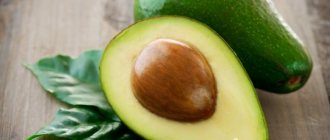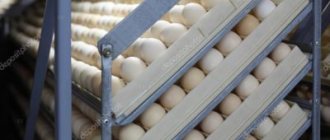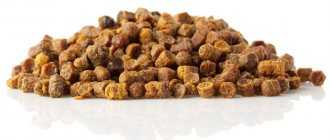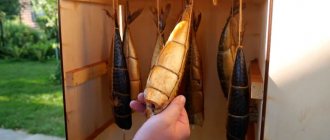Lingonberries are one of the healthiest and most popular berries in central Russia. In addition, lingonberries are a much more affordable product than cranberries or any other berry. That is why many people prepare it for the winter. The easiest way to store lingonberries is to freeze them. However, this method is also the most expensive and inconvenient, since the berries take up space in the freezer. Fortunately, there are many other techniques for storing lingonberries at home without a refrigerator.
Properties of lingonberries that promote long-term storage
Lingonberries contain organic acids that have antiseptic properties: gallic, ellagonic, ursulic, quinic, tartaric, malic, acetic, benzoic, pyruvic, oxalic. They help keep the berries fresh for a long time.
Thanks to the natural preservative, the berry can be stored without heat treatment and without refrigeration for 8-10 days at a temperature of +18...+26 °C. To do this, just wash them well, sort them out and place them in a storage container, preferably wooden. A wicker basket or basket is ideal for this purpose.
Thanks to the acid contained in lingonberries, the berry can be stored for a long time until next use. Benzoic acid retains the beneficial properties of the berry, even if it has been in the refrigerator for a long time.
There are several ways to prepare lingonberries for the winter, thanks to which they will be able to delight you with their taste and beneficial properties even after several months.
How to preserve berries during transportation
If you need to transport berries over a long distance and keep them fresh, it is advisable to collect them just before setting off on the road. In this case, the fruits should be sorted immediately, placing strong, ripe and crushed ones separately. You also need to make sure that leaves and twigs do not fall into the container, since during transportation they can damage the integrity of the berries.
It is best to transport harvested lingonberries in small containers, for example, wicker baskets or plastic containers. When using buckets, they should not be filled to the top, but to a maximum of 30 centimeters, so that the berries do not wrinkle.
Useful video: a visual recipe for canning lingonberries
Methods for preparing lingonberries for the winter to preserve vitamins
Fresh lingonberries
To store fresh berries you will need a cardboard box. You need to carefully place intact berries into it. Place the box in a cool place, for example on a balcony. But provided that the place where the berry stands is not exposed to direct sunlight. Also, a refrigerator or a dug cellar is ideal for storage.
If severe cold begins, immediately remove the berries from the balcony. It will freeze, which means it will be unsuitable for food. You can store berries this way in a cardboard box for up to 2 months. The main thing is that preliminary preparation has been carried out, namely washing and drying the berries.
If there is a need to leave lingonberries for a longer period , for this they need to be cooked in their own juice . To do this, the berries are thoroughly washed and sorted. Then, take a sterilized jar and place the berries on the bottom in one layer of 3 to 5 cm. Then, gently crush the berries with a wooden spoon until it yields juice.
After this, another layer is laid out again and the same procedure is carried out. This is repeated until the entire jar is filled. Then you need to close the container with a lid and put it in the refrigerator.
During the first month, check the jar for mold growth. In this form, the berry can be kept in a cool place for up to 7 months, and it will not lose its taste and healing properties.
Frozen lingonberries
And of course, the berries can be frozen. To do this, the lingonberries need to be carefully laid out on a tray and placed in the freezer. As soon as the berries become hard, they are placed in a container or in a special bag for freezing. Place neatly in the freezer. You can store berries this way for 1 to 3 years. However, remember that during the defrosting process, the berries will definitely lose about 30% of their beneficial properties.
This method is considered more gentle than cooking, since the berries do not undergo heat treatment. Lingonberries should only be frozen in a dry state. But there is one important detail: defrosting. After this, it is not recommended to freeze lingonberries again.
Pickled lingonberries
In this case, again, due to the lack of heat treatment, wild berries do not lose their vitamins and are wonderfully preserved even for the winter. To prevent the product from spoiling, you should add either granulated sugar or salt to it and marinate.
Soaking lingonberries
This method is absolutely not dangerous for the beneficial qualities of lingonberries. The berries can simply be poured or crushed without adding sugar.
Benefits of lingonberries for the human body
Lingonberries can honorably be called a universal berry. Because it can be used for many purposes. For cooking? Wonderful! Lingonberries are a wonderful side dish for almost everything, because there are so many different ways to prepare them. Use lingonberries in medicines? No problem!
Not many people know that preparations made from the leaves are used in addition to diuretics; they are a very good disinfectant and anti-inflammatory agent. Lingonberries strengthen human capillaries. May improve vision and help people with tuberculosis. Ascorbic acid is also made from the leaves and is used in the manufacture of various acids.
Pregnant women are recommended to eat lingonberries. Since it is rich in all the vitamins necessary for the body: C, B1, B2, A. It has a sufficient amount of proteins, fats and carbohydrates. Increases the overall tone of the body, putting the nervous system in order.
Eating lingonberries is not recommended for people with kidney disease and hypertension.
How to store green lingonberries
When separated from its bush, not only will the berry lose most of its microelements, but instead of turning red, it will dry out. Another thing is slightly unripe berries, slightly white on the sides or pinkish. You can scatter them at home in a thin layer on paper so that they dry and mature. It is possible that with this method of ripening the fruits will be slightly bitter.
As a rule, green lingonberries are not collected or stored. It is believed that green or white lingonberries are unripe berries that are not suitable for food.
It is believed that green fruits cannot be eaten, and they do not ripen at home. However, there are people who believe that green lingonberries contain a huge amount of useful substances. And despite the prohibitions, they strive to preserve it.
You can preserve green lingonberries using one of the above methods. However, this may not always be healthy, and borders on intestinal upset.
In general, green lingonberries are not suitable for food. So it is better to collect and store it fully ripe.
Benefits for humans
Lingonberry has been used as a valuable medicinal plant for several centuries . This is due to the presence of a large number of useful substances in it.
Lingonberry has been used as a valuable medicinal plant for several centuries.
Perennial evergreen shrub contains:
- potassium, calcium, iron, phosphorus, magnesium, copper;
- provitamin A;
- acids of organic origin;
- mineral salts;
- pectins;
- vitamin B2;
- Sahara.
Tannins cleanse the body of heavy metals (lead, cesium, cobalt).
The anti-inflammatory properties of the plant enhance the effect of medicines, so the berries are taken for fever (the juice can reduce body temperature) and as a restorative remedy after serious illnesses.
The perennial evergreen shrub is used to treat the following diseases:
- prostatitis;
- pyelonephritis;
- bronchitis;
- pneumonia;
- rheumatism;
- cystitis;
- gingivitis;
- stomatitis;
- tonsillitis;
- angina;
- mastitis;
- lichen;
- scabies;
- diabetes;
- oncology.
Berry juice, infusion of leaves and fruits, juice, jam have a healing effect, so it is important to preserve lingonberries so that they do not lose their beneficial properties.
Conditions and periods of storage of fresh lingonberries after harvest
Thanks to the benzoic acid contained in lingonberries, the berry can be stored for a long time even when fresh.
How to preserve lingonberries without refrigeration
With any storage method, lingonberries need to be sorted and washed. There is an opinion that this is not necessary to do so as not to crush the fruits. This opinion is erroneous, since the presence of crumpled or green berries, small debris and twigs in the total mass can lead to the fact that the entire harvest will go to waste.
1 way
If you decide not to use the refrigerator for storage, then you do not need to pre-process the berries .
- Remove debris and damaged lingonberries;
- Place it in a plastic container, completely dry and clean;
- Distribute carefully, removing green or overripe fruits;
- Place in a cool place out of direct sunlight.
- It’s great if the room is cool, for example, using air conditioning.
Also, before each use, mix the berries thoroughly and see if rotten or overripe fruits appear. They must be removed to prevent disease. In this form, depending on the room temperature, the berries can be stored from 3 days to 2 weeks.
Before each use, lingonberries should be thoroughly rinsed under running water.
Method 2
Fresh, washed and dried lingonberries in a wooden basket can last in a cool room for about 3 weeks. In a private house this could be a cellar, in an apartment - a balcony, if it is not on the sunny side and the temperature fluctuates +3...+7 °C. In addition to wooden containers, you can use glass or thick paper bags.
Even outside the refrigerator, lingonberries can last up to 2-3 months if they are placed in glass jars and filled with cold water. It is advisable that the jars stand in a cool place without direct sunlight.
How to store lingonberries in the refrigerator
In crumbly form, in the refrigerator, the forest beauty lives for about 10 weeks.
- For storage, the berries should be washed well;
- Leave it on the towel so that excess moisture evaporates;
- Then place the berries in a plastic bowl.
It is not recommended to keep the berries in a bag, as the resulting condensation will cause the berries to disappear very quickly.
Depending on the initial state of the berry, lingonberries can be stored in this form from several weeks to 2 months .
Other storage methods
This juice stores a large amount of vitamins
In the process of harvesting lingonberries, there is always some bruised fruit that cannot be frozen or soaked in water along with others. Such berries can be stored for the winter in a different form. You can squeeze juice out of them, which can be stored in a bottle in the refrigerator for about two weeks, and if preserved - for more than a year.
You can also grind crushed fruits together with sugar. Before this, they are washed and cleared of leaves and sticks. Then they grind it in a meat grinder, blender or by hand, adding sugar. For 1 kg of lingonberries, take 1 or 2 kg of sugar, depending on how sweet you want to make the dish.
The crushed berries are placed in clean containers and stored in the refrigerator. They can stay there for several months. To increase shelf life, you can sterilize the jars and place the berries in them, sealing them hermetically. However, unlike canning, it is advisable to keep them in the refrigerator.
For longer storage, berries ground with sugar can be frozen. They are laid out in small molds to form briquettes. After this, they can be packaged in bags and stacked one on one in the freezer.
In this form, berries sealed in jars can be stored for several months.
On a note
When picking or buying lingonberries, you need to choose only ripe berries. They have a rich, bright red or burgundy color. Unripe fruits, after being picked from the bush, will not ripen further. Without knowing this, green berries are sometimes left in the sun to ripen, but this does not happen.
Freezing: how much and how to store in the freezer
Freezing is a good method and a lengthy procedure that requires a step-by-step approach to keep the berries fresh and healthy. Frozen lingonberries can be stored for several years. In addition, this method is very practical and convenient - by freezing the berries in portions, you can gradually take them out for cooking throughout the year.
For convenience, you can use vacuum bags with a clip. In this form, the product is sent to the freezer compartment and can be stored for a whole year at a temperature of -6 to -25 °C, and is taken out as needed.
Treatment
The first thing you need to do is sort out the lingonberries. Clean it from any insects, leaves and other small debris. Separate completely unripe fruits from strong and whole ones.
- Carefully sort through, remove debris, unripe or overripe berries. Remove foreign elements that may affect safety;
- The berries can be sifted through a fine-mesh mesh, blown with a vacuum cleaner, or cleaned on a surface that has a rough coating.
the washing up
Next, you need to rinse the crop with water in order to clean the berries from dust and foreign elements.
- Pour water into a deep container. You need to pour the berries there. Using a colander, rinse under running cool water;
- The next step is to leave the berries for about 15-20 minutes. Dirt will float to the top;
- Then carefully rinse the berries with your hand so that all the debris that remains at the bottom floats to the top;
- Drain the water and rinse the berries under running warm water.
Drying
Prepare a clean, dry towel or paper that absorbs moisture well. Place raw wild berries on it in one layer and let them dry thoroughly. They also need to be carefully blotted with gauze on top and left to dry completely.
A very important point! No more than a few hours should pass from collection to freezing to preserve the full range of vitamins.
As soon as the lingonberries have dried , they should be carefully placed in bags, trying to remove all excess air from there.
Only after complete drying, when the berries become completely dry, can they be frozen.
Freezing rules to prevent berries from sticking together
- Sort through the berries again, leaving only whole, and most importantly ripe, fruits;
- Dry berries need to be laid out on specially prepared trays;
- Arrange the berries on trays in a single layer;
- A few hours later, as soon as the first batch is frozen, it is sent to a special food container or bag for freezing and the next batch is prepared.
The freezing bag is tightly closed when the berries are almost completely filled. After this, the bag is evenly placed in the freezer for long-term storage.
Freezing temperature for lingonberries
As mentioned above, frozen berries partially lose their properties. However, in order to minimize the risk of losing the healing properties of the berry, it is necessary to carry out favorable storage at a temperature that does not exceed -18 °C , but at the same time, not lower than a temperature of -25 °C .
Containers for freezing lingonberries
For storage, use special freezer bags, which are sold in hardware stores. However, if you do not have such bags, you can leave them in plastic containers, but provided that the berries were frozen in advance in portions and do not stick together inside the container.
Shelf life of frozen lingonberries
Frozen lingonberries can be stored for years. However, the beneficial properties remain in this berry if the storage period does not exceed 8 to 12 calendar months . It is better to use this berry in the first six months from the moment of freezing. In this case, you will be able to take advantage of the greatest amount of vitamins and nutrients from these fruits.
Officially, they say that the maximum shelf life of the berries is three years.
How to quickly sort through the harvest
Having harvested a large harvest, it is worth asking the question: how to clean the fruits from so much debris? In this case, there are several effective ways to clean raw materials. Which one to choose depends on the degree and type of contamination of the harvested crop.
Cleaning on rough surfaces
To clean the harvested crop from debris, it is necessary to make an inclined chute. Cover the bottom of the device with a rough cloth, and roll the berries down the gutter in small portions. During the cleaning process, debris will remain on the surface of the fabric, and the fruit will begin to roll into the basin.
Sifting in the wind
This cleaning method is suitable in windy weather. A wide basin needs to be placed on the ground, a small container with the harvested crop should be raised up one and a half meters. Start pouring out the fruits in small portions. The wind will blow away the debris, and the clean berries will fall into the prepared container.
Using a vacuum cleaner
Dry berries can be quickly removed from debris using a vacuum cleaner. Place a small amount of fruit in a sieve and direct air flow from below. To do this, the vacuum cleaner hose is connected to the blower.
Using a wide mesh
When picking lingonberries in the forest, not only twigs and small leaves, but also sand and soil particles end up in the container with the berries. You can get rid of such pollution using a wide mesh. It needs to be installed at an angle, a film should be spread underneath or a large container should be placed and the fruits should be slowly poured out.
See also
Symptoms and treatment of blueberry diseases, pest control methods
Read
How to store lingonberries in water
Storing lingonberries in water is becoming increasingly common. The berries need to be prepared in advance, namely, cleared of debris and also rinsed under running water. The berries are placed in a sterilized jar and filled with cool water. Then, close the jar with a lid and put it in the refrigerator for a long time.
Important! Remember that there should be almost twice as much liquid as the berries being harvested.
Sometimes salt or sugar is added to the water to add flavor. Lingonberries can retain their properties in this way for 12 months.
Pickled lingonberries without added sugar are perfect for those who follow a healthy diet. If you are preparing it for a long time, you need to try the water at least once a month. If it starts to turn sour, it’s time to update it.
There is nothing complicated in this recipe:
1) As with any preparations, you should first select good ripe berries
2) Rinse them under the tap
3) Fill a third of the jar with berries
4) Pour the contents with boiled water at room temperature
5) Close with a lid with holes or gauze. Let it brew for at least seven days.
6) As you use it, replace the wasted water with the appropriate volume. Gradually, the concentration and benefits of lingonberry water will decrease. But this is not scary, since the berries themselves still retain most of the vitamins.
7) You can store soaked wild berries at room temperature, in a cool place or in the refrigerator. This way the harvest will not be lost until 6-8 months.
Lingonberry leaves
Few people know that lingonberry leaves also have a large amount of useful substances. Very often they are used in medicine and for the manufacture of medicines. The leaves are collected in early spring, in dry weather. Only green leaves without any signs of damage are selected.
Leaves that have survived winter frosts are especially rich in macroelements. Cold preserves all useful substances.
It is best to store lingonberry leaves in craft bags to reduce injury to them. The shelf life reaches 3 years.
Drying
Dried lingonberries are ideal if you plan to drink delicious and aromatic tea or use raw materials for medicinal purposes. Preparation by drying requires more effort than soaking, but such a product can be stored for years. In addition, as a result you can get a healthy alternative to sweets - marshmallows. To dry lingonberries, you need an oven or a special electric dryer.
- The berries must first be cleared of debris and washed with running water;
- Place the oven at a temperature of 60 degrees.
- You need to place the already well-dried berries on a parchment sheet of paper on a baking sheet and set them to dry at a temperature of 60 degrees. They need to be turned over periodically to dry evenly.
Important! Remember that the berries should be laid out in one layer.
The action plan is as follows:
1. Preheat the oven to +60 °C.
2. Place clean and dry berries on a baking sheet in one layer. Before doing this, it would be a good idea to cover the baking sheet with parchment or baking paper.
3. Dry for 3-4 hours, stirring occasionally so that the treatment is distributed simultaneously. It is better to keep the oven door slightly ajar during the entire process.
4. Distribute the dried berries into glass jars and close with nylon lids.
In a special electric dryer, it is safer to dry at lower temperatures - from +16 to +45 °C. True, it will take much more time, up to 12 hours, or even a day.
The technology is approximately the same: scatter the berries in one layer onto the rack of an electric dryer. If lingonberries fall through the bars, you can cover them with parchment or gauze. Wait for the lingonberries to dry completely, distribute them into convenient containers. The ideal options are glass jars.
Ready-made dry lingonberry fruits should be stored only in a special glass container and preferably kept in a cool and dark place without direct sunlight.
Preparing lingonberries before starting the process
The method of soaking came to us from ancient times; our ancestors prepared food for the winter in this way, because they did not have freezers or jars for seaming. Nowadays, many different methods of preserving food have been invented, but they have not abandoned the practice of soaking lingonberries. This way it is preserved much better.
In order for the product to be preserved as expected, it is necessary to carry out a preliminary preparatory process. Its subtleties are as follows:
- Each berry is inspected for rot and bruises; spoiled ones are placed in a separate container; they will not take part in the urination.
- Select ripe but firm fruits.
- Washing thoroughly is a must.
- The water is allowed to drain from the berries; if desired, you can dry them.
Dishes also remain important; the quality of the final product directly depends on it. Under no circumstances should aluminum containers be used - oxidation of the metal will lead to the formation of toxic substances
The product immediately goes from being useful to being harmful. The most acceptable option are wooden barrels or glass jars. Food-grade plastic will perfectly preserve urine throughout the year.
The containers are thoroughly washed with soda and rinsed. It is advisable to sterilize glass jars before starting work.
Canning lingonberries
In kind
- Canning lingonberries in their natural form is called “in their own juice.” To do this, place the berries in a jar in a small layer and knead thoroughly. Then the next layer is laid out and kneaded again until the berries release juice. This continues until the jar is completely filled.
Important! For this method, you need to use only thoroughly sterilized, clean jars and lids.
Lingonberries do not need to be filled with anything; over time, they will give even more juice and will be stored in it.
This method is the most useful and environmentally friendly.
- The second way to preserve the maximum beneficial substances of lingonberries is to marinate them in their own juice. To do this, the berries are divided into two parts. The juice is squeezed out of one of them and whole berries are added to the second part. Place this mixture in a saucepan and bring to a boil. Cool the finished preserves and place them in sterilized jars. Store the product in a cool and dark place.
Morse
Lingonberries are an ideal component for fruit juice, which gives a pleasant sourness. True, you can store lingonberries in the form of fruit drink for no more than two to three days.
You can make fruit juice from both frozen and fresh berries.
Then a little sugar is added in the required amount and mashed together with the berries. The fruit drink is filled with water and put on fire. It cooks exactly 5 minutes after boiling, after which it turns off and infuses for a while. Before serving, the liquid must be thoroughly strained through a sieve to remove excess debris.
Exact recipe:
1) Rub the berries through a sieve or grind in a blender. Strain the mixture through cheesecloth. Pour the juice into a separate bowl and leave it for now, you will need it later. Pour the pulp and soft part with water in a 1:1 ratio and put on fire.
2) Cook lingonberries for about an hour over low or medium heat. Add sugar, mint or cinnamon to taste. Boil.
3) Cover the future fruit drink with a lid and let cool.
4) Strain the cold drink through cheesecloth again, mix with berry juice and roll up.
You can also pour fruit juice into a sterilized jar and carefully close the lid.
You can store lingonberry juice in a cool place for 2 months.
Juice
To prepare lingonberry juice you will need 500 g of berries, sugar and water to taste.
- Wash the berries thoroughly.
- Place the sorted and clean berries into a 3-5 cm jar, crush them with a wooden masher or puree them using a blender. Next, add a second layer and repeat the procedure until the jar is full.
- Then sugar and water are added.
- Squeeze out the mixture using gauze (it is best to do this through a special sieve). Pour the resulting juice into a saucepan and heat to 60 degrees.
- Infuse the mixture at room temperature for 2-3 days. As a result, juice will appear.
- Prepare bottles or jars. Rinse them thoroughly and remove all labels. Place in a cold oven and heat to 200 degrees. Turn off the oven and do not remove the bottles until they have cooled completely.
- Once ready, pour the juice into sterilized bottles or jars and close with tight stoppers and lids.
The resulting lingonberry juice does not require pasteurization, since benzoic acid prevents the berries from rotting. In order for the finished product to be stored for a long time, heat treatment is essential.
Lingonberry juice can be stored in this state for up to two years at room temperature.
Compote
For the compote you will need:
- about 400 g lingonberries;
- 1.5 liters of water;
- 200 g sugar;
- two tablespoons of honey;
- one lemon;
- 12 pieces of cloves;
- two cinnamon sticks.
You need to put the berries in a saucepan and fill it with water.
Then the berries are brought to a boil and cooked over low heat for another 15 minutes. During this time, the lingonberries will give all their juice to the water. We get a concentrated liquid. Then you need to prepare the other ingredients listed in the composition. Add the juice of one lemon, which is mixed with honey, cloves and cinnamon. The whole mixture must be added to the lingonberries, add sugar and leave to infuse for several minutes.
The compote is ready for consumption. Also, it can be preserved in sterile jars.
Served both cold and warm. You can make mulled wine based on this drink.
Jam
To make jam you will need:
- 12 milliliters of water;
- 600 g lingonberries;
- 7 glasses of sugar.
The berries need to be sorted well in advance, washed and placed in a pan. Then, pour water over the berries and put on low heat. Bring to a boil and simmer over low heat for about 20 minutes. Then, add granulated sugar and stir thoroughly.
Wait for the mixture to boil again and then begin to remove the foam that forms on top. After the foam has stopped forming, remove the pan from the stove and then carefully place the finished jam into clean jars.
The jars are closed with nylon lids for the winter. First, cool at room temperature and then put in a cool place. Berries can be stored in this form for several years.
Lingonberry jam recipe
Jam differs from jam in that it can contain whole berries that are not crushed before cooking.
To make jam, for one kilogram of berries, take one and a half kilograms of sugar and half a liter or a little more water.
Prepare jam as follows:
- The berries are sorted, leaving only ripe fruits, washed and dried;
- Then they are put in a colander and poured with boiling water to remove the bitterness, and placed in an enamel pan or bowl;
- The syrup for jam is prepared separately. Sugar is added to boiling water and stirred until it is completely dissolved;
- After this, the berries are poured with the prepared syrup, mixed well and placed on low heat;
- Boil lingonberry jam for 30 minutes;
- Then it is laid out in sterile jars, pasteurized and sealed with airtight lids.
- The jam is left to cool in the jars without turning them over.
The finished jam can be stored for several years in suitable conditions.
There are a lot of recipes for processing and preserving lingonberries. It is often topped with cranberries or apples, the latter adding greater sweetness to the preparation.
In syrup
For lingonberries in syrup you will need 1 kg of berries, 300 g of sugar and two glasses of water.
- The lingonberries are carefully sorted and dried.
- Then, place exactly half of its volume in the jar.
- Pour sugar and water into a saucepan. If desired, you can add some cloves and lemon center. The mixture must be boiled, then cooled.
- The syrup must be poured into the rest of the jar. Everything is closed with a stylized lid and stored in the refrigerator or in a cool place.
Features of preparing soaked lingonberries
They prepare it for future use in different ways, but, as practice has shown, it is the soaked one that lasts much better and longer.
To do this, it is important to carry out the process correctly
Urination has the following features:
- A large number of berries for preservation in this way are placed in large containers made of plastic or wood.
- Before placing lingonberries in a container, the berries undergo careful selection.
- If you come across leaves during the preparation process, do not throw them away. By transferring lingonberries with them, we get an additional portion of vitamins and microelements in the marinade.
- Antonov apples will give a pleasant aroma to the forest gift. They are cut into large cubes and placed on top.
- Soaked lingonberries without sugar and spices will last for a long time. The fruits contain benzoic acid, which is responsible for preservation, but the filling must be changed periodically. Without sugar, it can become moldy or sour.
Important! Lingonberries are very useful in any form. Regular consumption will improve metabolic processes, strengthen the heart and blood vessels, and in winter it will be an excellent immunomodulatory agent.
In honey
To prepare berries in honey, you will need 300 g of fresh lingonberries and exactly the same amount of liquid flower honey.
- Lingonberries are also prepared, freed from debris and washed. Then they dry it.
- The finished berries are mixed with honey. If the honey is too thick, it must first be melted in a water bath. The resulting mixture must be carefully placed in sterilized jars.
- Remember that the berry should be slightly submerged in the liquid.
- Cover with lids and store in a cool place, for example, in a refrigerator.
Lingonberry juice with sugar
Before starting cooking, extract juice from the berries. This can be done manually, using a juicer or juicer. A simple way is to grind the berries in a blender and squeeze through a cloth bag. Another method is described in the recipe for lingonberry juice with sugar.
What ingredients to take:
- lingonberry juice – 1.2 l;
- sugar – 600 g.
Preparation progress:
- Cover the lingonberries with water in a saucepan. You will need about a glass of water. Push until the berries burst. Bring to a boil.
- Let it brew for 2-3 hours. Place on an iron sieve and cheesecloth. All liquid should drain.
- Add sugar to the liquid.
- Boil for 10 minutes.
- Pour into sterilized jars.
- Sterilize in a saucepan of gently boiling water for 25 minutes (500 ml jars). For liter jars the time increases to 35 minutes, for 3 liter jars up to 45 minutes.
- Seal tightly with lids.
Signs of corruption
The following signs indicate spoilage of lingonberries:
- Sour smell.
- Bitter taste.
- Covered with mucus.
- The appearance of mold stains.
- Fermentation, which is manifested by a characteristic yeasty smell.
Eating lost lingonberries is fraught with severe poisoning . This product should be discarded immediately . If it starts to ferment, you can add it to the mash , which may be important for distillers.
Storage in a basement or cellar
Shelf life: 3 months Temperature 3-5 degrees Celsius is the ideal condition for storing fresh lingonberries. These conditions can be achieved by storing berries in a dark basement or cellar with moderate humidity. To do this, pour cold boiled water over the lingonberries, and in case of severe frosts, drain the water and place the berries in a wooden container or basket. Under such storage conditions, lingonberries retain their beneficial properties and taste as much as possible.











